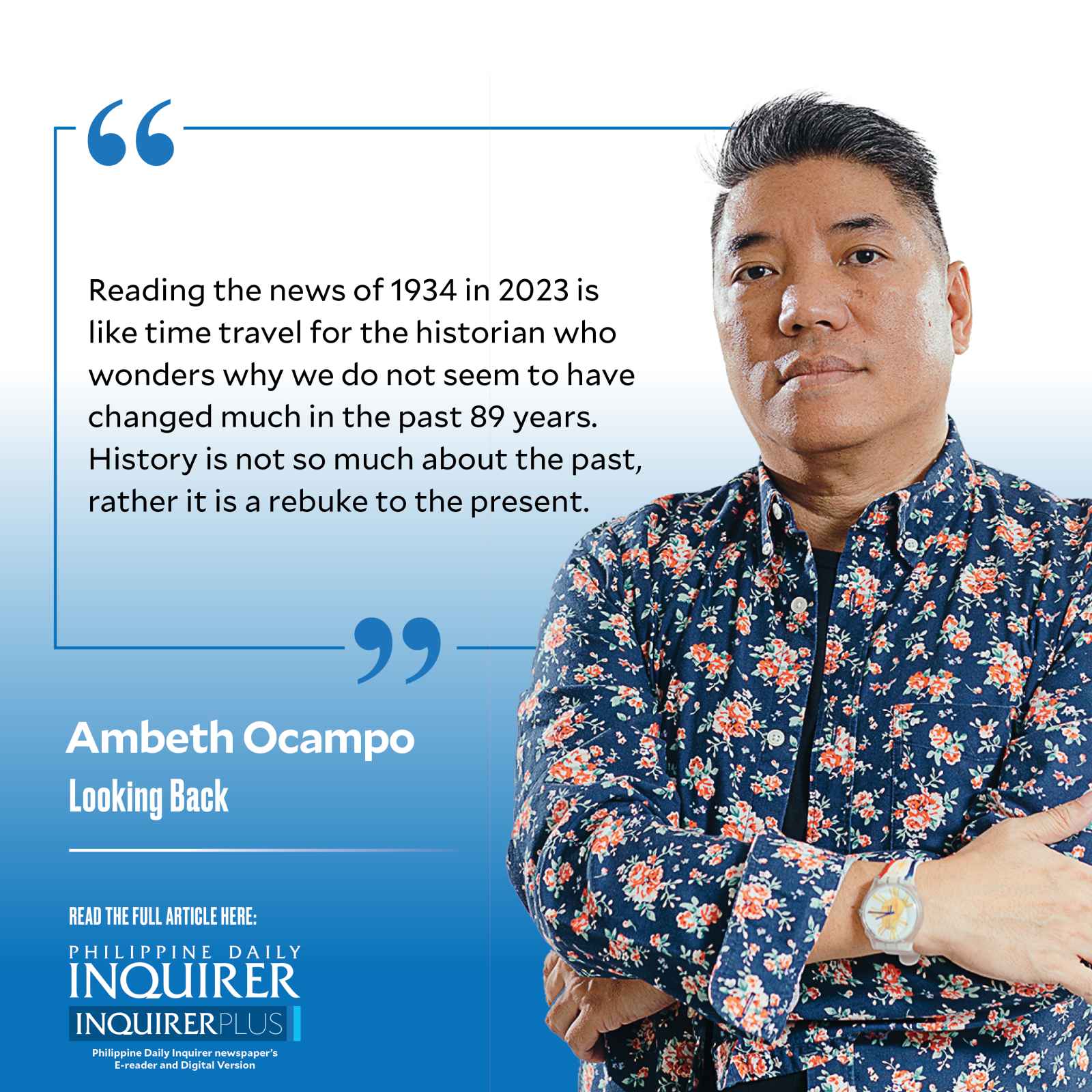Newspapers and time travel

Norman Hingston Hill (1887-1971) is a name that would not ring a bell, not even for many Filipino historians. Hill served on the staff of William Francis “Frank” Murphy (1890-1949) during his term as governor general of the Philippines (1933-1935) and as first United States high commissioner to the Philippines (1935-1936). While in Manila, Hill compiled 15 scrapbooks of newspaper clippings, covering the years 1933-1936, now preserved in the Bentley Historical Library at the University of Michigan, Ann Arbor.
Scrapbooks are very subjective, they cover only what was of interest to the compiler. Ideally, a historian should go over entire newspapers instead of clippings, but then very few of the many prewar Philippine newspapers and periodicals have survived to our day. Fewer still are complete sets of certain periodicals that have to be sourced abroad either in physical copies or in microfilm. The Hill scrapbooks provide a sense of what the Philippines was like during Murphy’s time.
The first volume of the Hill scrapbooks highlights the pressing problems Murphy had to face and resolve. Education and schools then and now were an area of concern. Sugar production was impacted by US sugar quotas. The Philippine National Bank had to be reformed to save it from corruption and bankruptcy.
On the political front, there was much debate over the Hare-Hawes-Cutting bill that was to set the process and date for the independence of the Philippines from the US. The bill was worked on by the Os-Rox Mission, led by Sergio Osmeña and Manuel Roxas, but opposed by Manuel Quezon. Textbook history taught me about the Hare-Hawes-Cutting or HHC Bill of 1933 that was passed by the US Congress but rejected by the Philippine Senate under Quezon which later ratified the Tydings-McDuffie Act of 1934. From this was born the 1935 Philippine Constitution, the Philippine Commonwealth, and the independence of the Philippines in 1946. Textbook history gave me the resulting events but not the details.
One can fall into the rabbit hole of historical detail as I often do, but it makes for engaging reading. The scrapbook for 1934 had news about Philippine trade: sugar, hemp, abaca, and even the meat industry and the various steps that were needed from the slaughter of the animals to the sale of meat to consumers. It had news on the Philippine Historical Research and Markers Committee established by Murphy that highlighted historic sites and landmarks starting with those in Intramuros: San Agustin Church, University of Santo Tomas, and the College of San Juan de Letran. Some clippings came with photographs like the “life belts” better known as lifesavers or “salbabida” that were provided on three of the four bridges along the Pasig: Jones, Santa Cruz, and the Colgante (Hanging Bridge). These lifesavers were attached to the bridges by long rope that, in principle, would minimize drowning from accidents and suicides.
Clippings were not confined to news, in “Imperial Manila” the political news from the regions were equally engaging. On Jan. 16, 1934, the Herald carried the story of Dr. Emilio Osmeña, son of Sen. Sergio Osmeña, giving Vicente Sotto “a black eye after a fistic encounter at the Elite, [a] popular café in Cebu.” Dr. Osmeña asked Sotto to explain his allegations that Sen. Osmeña increased the value of his property by using government funds to build roads on them. Heated words were exchanged and “Dr. Osmeña walloped the former representative giving him a black-eye. Attorney Sotto attempted to hit back, but Dr. Osmeña dodged a stick with a hidden sharp point thrown at him. After the encounter, Cesar Sotto, son of the candidate, accompanied by two companions, sought Dr. Osmeña.”
Politics seemed to be more personal and physical outside Manila. In Dumaguete wharf, the governor of Oriental Negros was assaulted by a town presidente and his men. Back in Manila, 200 indigenous people (IP) from Mindanao staying at the Bureau of Non-Christian Tribes in Intramuros demanded that they be issued mosquito nets to help them sleep. Without this, they would not be performing at the Manila Carnival Mindanao Night. When a racist bureau official remarked that the IPs were spoiled: “Why, out there in the wilderness from where they come from 99 percent of them have not heard of such things as mosquito nets. The majority of them have slept without them as long as they have been alive. Now they want mosquito nets, as if they have not been bitten by mosquitoes all their lives. This is rich!” Bureau Director Teofisto Guingona intervened and gave the IPs what they asked for.
Reading the news of 1934 in 2023 is like time travel for the historian who wonders why we do not seem to have changed much in the past 89 years. History is not so much about the past, rather it is a rebuke to the present.
—————-
Comments are welcome at aocampo@ateneo.edu




















